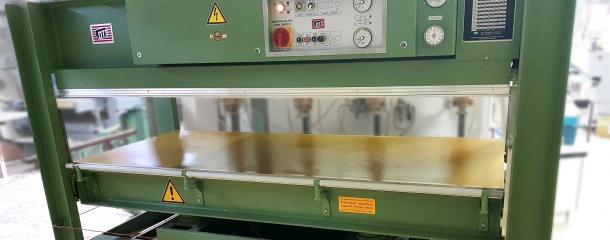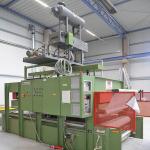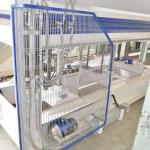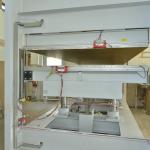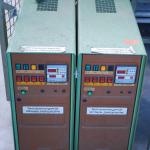Heating platesHeating plates ensure even and rapid hardening of the glue. Electric heating plates made of aluminumGood thermal conductivity, lightweight, soft, temperatures of up to 130 °C. Improved properties of the aluminum surface can be achieved through anodising. Steel heating platesEnsure optimal temperature distribution and accuracy at high rigidity. Up to 40 mm thick steel plates receive holes at regular intervals through which the heating agent (water, steam or thermal oil) is led; high specific pressing power possible. Heating coilsThe heating agent is led through a continuous register soldered of pipes. The heating coils are one-sided (upper and lower plate) or double-sided (spacer(s) in multilevel presses) covered with aluminum plates. The use of heating coils is recommended for existing hot water or steam supply (energy saving). Combined heating platesCombination of heating coils for use of existing hot water or steam (basic heat) in connection with an electrically heated plate (additional heat). This achieves a reduction of the electrical energy consumption. A useful addition to presses with a connection to the hot water heating system may be additional tempering devices. They operate on the principle of a continuous-flow water heater. These heaters warm up the water circulating within the press up to the required temperature level if the flow temperatures of the heating system are too low. Water vapor as a heating agent is rarely used because of the only small number of steam heating systems nowadays. To reach temperatures of more than 100 °C up to 250 °C, oil-heated presses are used. Using an electrically heated continous-flow oil heater, oil suitable for high temperatures (thermal oil) is heated and led through the press plates. |
CNC machining centres, robots891
Edgebanding, edge processing628
Saws, cutting machines441
Planers, 4-sided moulders188
Routers, shapers, tenoners, profilers181
Drilling, mortising machines135
Presses, clamps, joining machines204
Sanding machines321
Mechanisation, storage, packing technology201
Surface coating152
Production lines127
Heating, drying, waste chopping59
Dust extraction, compressed air, vacuum135
Assembly, worktables16
Lathes29
Tools, sharpening technology94
Equipment, Other machines138

